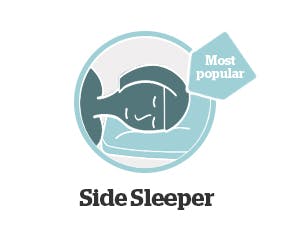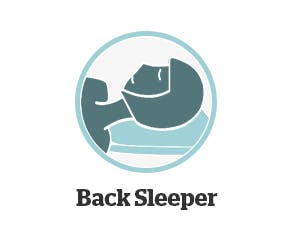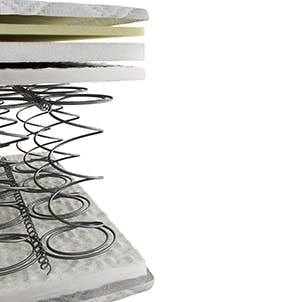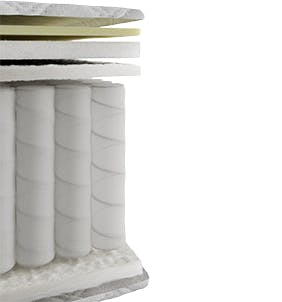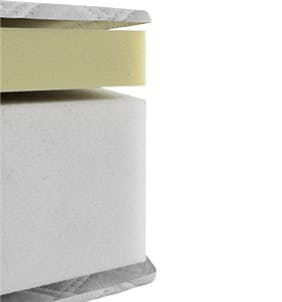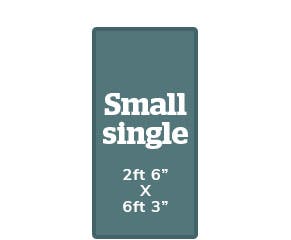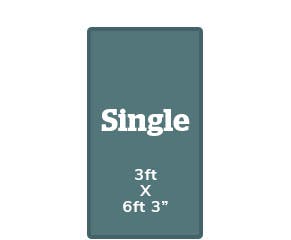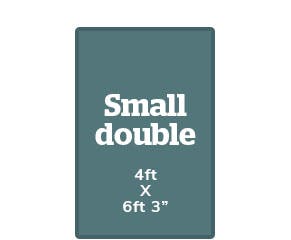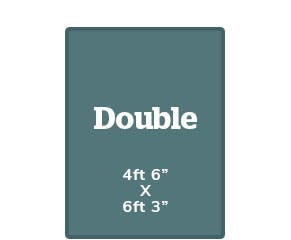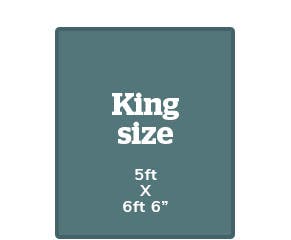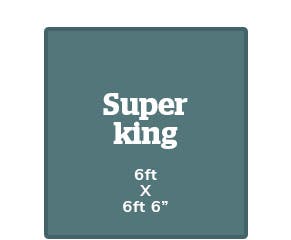Mattress Buying Guide
In this Guide
Our mattress buying guide will give you expert advice on the following:
•How often should I replace my mattress? • What’s the best mattress for my sleeping position? • What’s the best mattress for my weight? • What are the different mattress types? • Which additional mattress features are available? • What are the different mattress sizes? • What is my mattress' guarantee? • How can I make the most of my new mattress?
How often should I replace my mattress?
There are several factors that determine how long a mattress lasts, including the manufacturer, mattress type, how much you use it and how heavy you are. That said, a good quality mattress should last between 8-10 years. After that, it’s recommended you buy a new one to avoid it becoming uncomfortable and offering uneven support, not good for your back and posture, and definitely not good for the quality of your sleep.
There are several warning signs that you should look out for if you suspect it’s time for a new mattress.
Your mattress becomes saggy and lumpy, or you can feel the coils through the fabric.
You wake up sore, stiff and unrefreshed because your body isn’t being sufficiently supported.
The mattress fabric looks worn.
You have a better night's sleep in a different bed.
You’re more aware of your partner’s tossing and turning, or you both roll into the middle.
You notice allergies flaring up after a night’s sleep or notice allergies for the first time.
What’s the best mattress for my sleeping position?
Are you a front, side or back sleeper? Not everyone sleeps in the same position and how you snooze should be an important consideration when choosing your new mattress.
What’s the best mattress for my weight?
As well as sleeping position, your weight will determine the type of mattress you choose. Children are lighter so tend to need a Soft mattress that sinks down and contours around their body, while most adults will require a Medium or Firm mattress.
What are the different mattress types?
Mattresses aren’t all made of the same materials. We stock open coil, pocket sprung and memory foam mattresses, so it’s important to know which one works best for you.
Open Coil mattress
Features coils of high tensile steel, wound into hundreds of springs.
Pros
- The connected springs offer the same support across the whole sleep surface.
- Available in different comfort grades, some firmer than others.
- Good for single sleepers.
Cons
SHOP NOW
- Some feel movement and ‘roll together’ if sharing.
- Can be less supportive than other styles
Pocket sprung mattress
Individual pocket springs are enclosed within their own fabric pockets which move independently.
Pros
- Supports different weights sharing the same mattress, making them perfect for couples.
- Stops ‘roll together’ and reduces how much couples feel each other move in the night.
Cons
SHOP NOW
- Their sturdy construction makes these harder to turn and lift.
Memory foam mattress
Offers support by moulding around a person or body shape.
Pros
- Sinking-in feeling
- Relieves pressure points, while keeping you supported.
- Good for allergy sufferers as fewer dust mites.
- Distributes weight evenly.
Cons
SHOP NOW
- Retains heat, making you warmer at night.
- Can be quite heavy and harder to move
Which additional mattress features are available?
Now you’ve chosen your mattress type, think about what ‘extras’ you want and how they’ll help you to sleep better.
Memory Foam
Pillow Top
Orthopedic
Gel Top
Cool Top
Wool Fibres
- Moulds to the body’s contours and supports the spine.
- Offers a sinking-in feeling and pressure point relief.
- Adds an extra layer of comfort.
- A more supportive spring type.
- Spreads body weight and prevents the build- up of pressure points.
- Regulates temperature.
- Cools to reduce body temperature when getting to sleep.
- Regulates temperature.
- Made from natural fibres.
What is my mattress’ guarantee?
We stock only top, high-quality brands at Dunelm, and they all offer substantial guarantees when it comes to how long your mattress will last.
Top tip 1: How often to turn
You should rotate your mattress every 2-4 weeks for the first few months to ensure each side gets equal wear. After that you should rotate it every 3 months. If you’re able to flip your mattress to, then do this at the same time as rotating.
Top tip 2: Mattress protectors
Mattress protectors are a great way to keep your mattress clean and fresh. Make sure to measure the depth of your mattress before buying a mattress protector, so it fits perfectly.
How can I make the most of my new mattress?
While it's exciting getting a new mattress, before you dive in, here's what you need to do:
- A rolled mattress needs six hours to expand before it can be slept on and will take up to 72 hours to fully recover.
- A rolled mattress needs unpacking within three months of its arrival.
- It’s not uncommon for a foam mattress to have slightly unusual smell at first but this will disappear after a few days out of the packaging.
- All mattresses should be left to air for a few hours after unpacking.
- Allow time for fillings to settle as this will affect your comfort level over the first few weeks.
- Remember, your body can take up to 30 nights to adjust to a new mattress.


